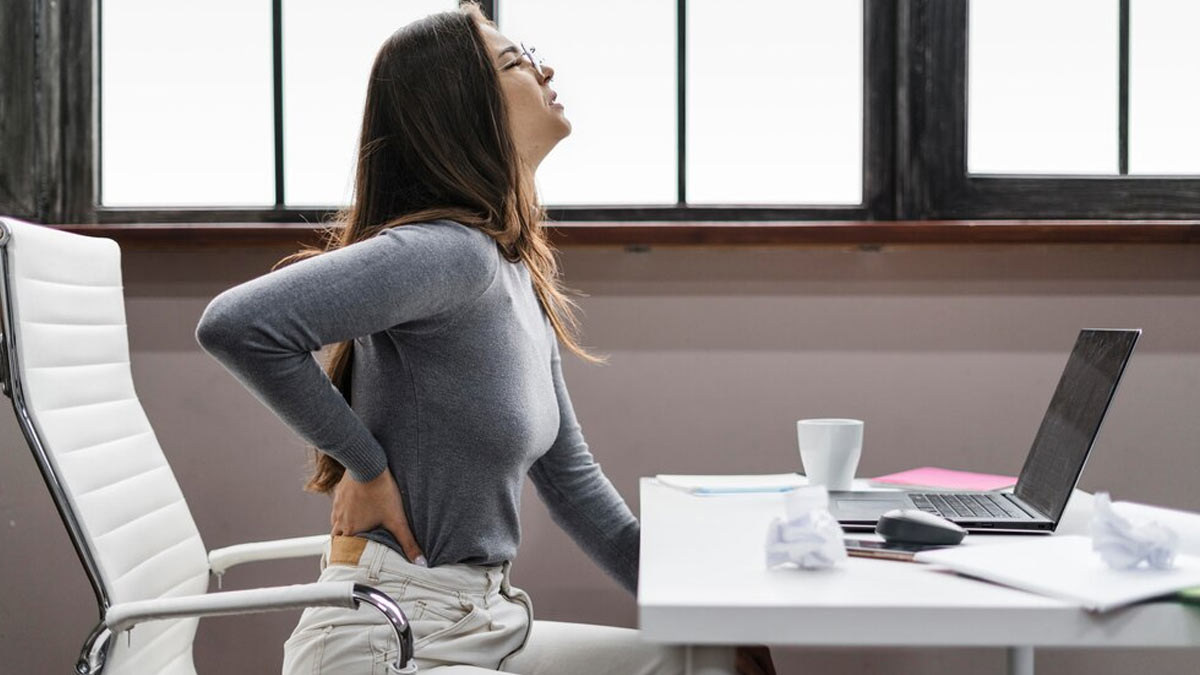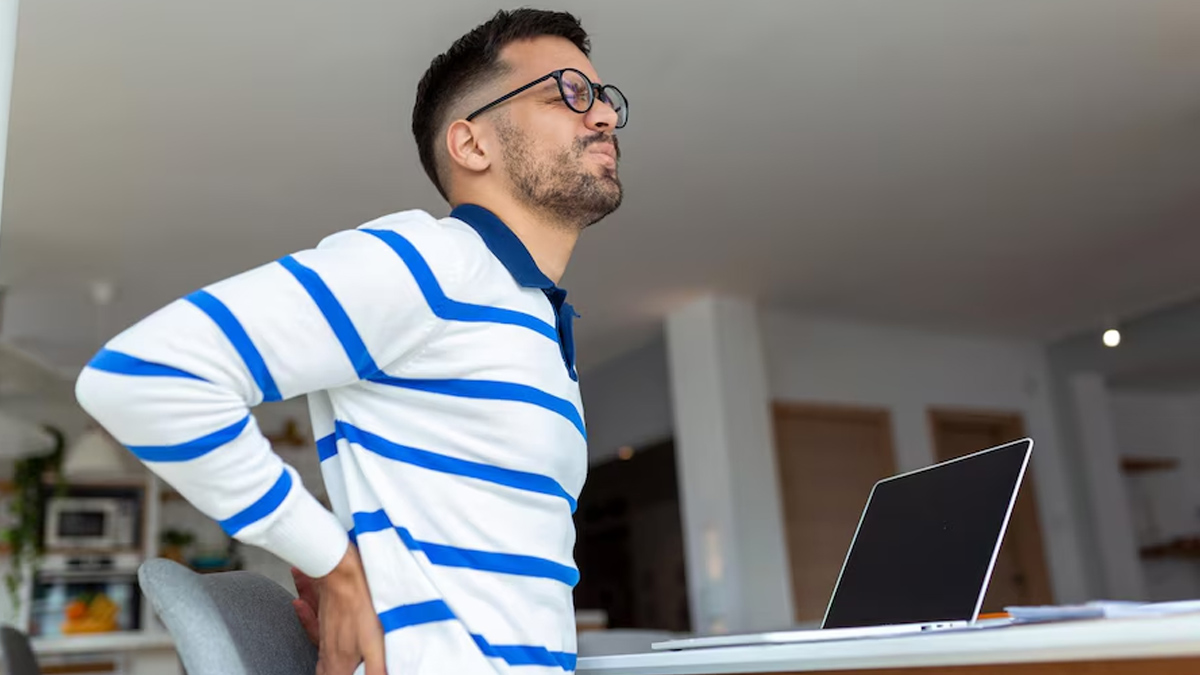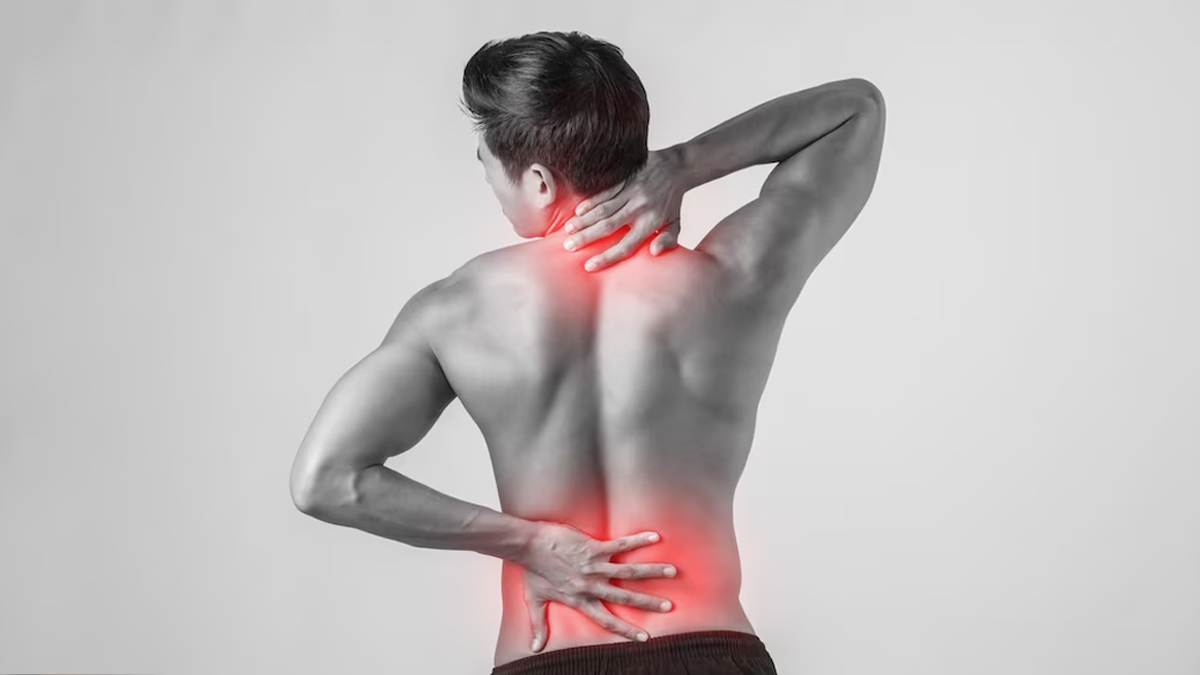
Lower back pain is a common problem. According to the World Health Organization (WHO), it affected over 60 crore people worldwide in 2020, and the numbers are estimated to increase to 84.3 crore by 2050. While older adults are most prone to the condition, young people are no longer immune to it. More and more people in their late 20s and early 30s are dealing with the condition, possibly due to the effects of spending hours on desktops, laptops, and smartphones and a lack of physical activity, says Dr GR Vijay Kumar, Director - Neurosurgery, Fortis Hospital, Anandapur.
Table of Content:-
Also Read: Types Of Exercises To Do And Avoid With A Lower Back Pain
Possible Causes Of Stabbing Lower Back Pain

In an interaction with the OnlyMyHealth team, Dr Kumar describes lower back pain as a sharp, painful sprain or muscle spasm, which may be caused by an overstretched, weak, or torn muscle or ligament.
According to him, a bad or incorrect posture is the most common cause of this issue. However, it could also be attributed to the effects of the prolonged and persistent usage of technology by young people.
“On the contrary, the prevalent trend of gym and heavy weight lifting among young adults can also cause injuries or muscle strains that might contribute to back pain,” the doctor highlights.
But besides lingering over devices and heavyweight lifting, various medical conditions can also cause such problems. These include:
- Muscle strains or aches
- Slipped disc
- Sciatica, or pain in the sciatic nerve
- Spinal conditions like spinal spondylosis or stenosis
- Arthritis
- Kidney problems
- Infections
- Prostatitis (infection in the prostate) and prostate cancer
- Pregnancy
- Ovarian cysts, torsion, and uterine fibroids
The WHO classifies lower back pain as specific or non-specific.
"Non-specific means that the experience of pain cannot be confidently accounted for by another diagnosis, such as an underlying disease, pathology, or tissue damage. It is non-specific in about 90% of cases. Risk factors for non-specific LBP include low physical activity levels, smoking, obesity, and high physical stress at work," the global health body states, adding, "Specific LBP (lower back pain) can be explained by an underlying disease (e.g., cancer), tissue damage (e.g., fracture), or may be referred from other organs (e.g., from kidney or aortic aneurysm)."
When Should You Consult A Doctor?
Generally, back pain does not need immediate medical treatment, says Dr Kumar.
However, if the pain lasts for more than a week, one should visit a doctor, he advised, adding that it becomes a matter of concern if a person experiences the following symptoms along with the back pain:
- Fever
- Incessant and intensive pain
- Numbness, weakness, and tingling in either or both legs
- Pain extending down the legs, particularly below the knees
- Changes in bowel habits or urinary incontinence
- Unintentional loss of weight
Also Read: Ease Sciatica Discomfort: Expert Lists 5 Simple Stretches To Try Before Bed
Who Is At Risk Of Lower Back Pain?

Although back pain is common these days, there are certain groups of people who are most likely to experience lower back pain. They include:
- People who are 30 years of age or older
- Obese people
- People who are physically inactive or lead a sedentary lifestyle
- People who consume alcohol and indulge in smoking and intoxicants
- Those with structural issues
- Individuals with chronic diseases
- People with depression and anxiety
How To Reduce The Risk?

If you’re at risk of developing lower back pain, here’s what you can do to reduce that risk:
- Quit smoking
- Consumption of a protein-rich diet is important as protein helps in strengthening the bones and repairing damaged tissues.
- Maintaining a healthy weight.
- Maintaining a correct posture while sitting, standing, and walking.
- Involving oneself in physical exercises and activities.
- Avoid sitting in one place or position for a longer period of time.
- Lifting a standard weight.
- Strengthening the muscles of the abdomen.
Conclusion
Chronic lower back pain can have a disabling effect on the body. The pain can sometimes radiate to other parts of the body, including the legs, making it difficult to move freely. This can interfere with daily activities and also impact productivity. Both young and old people are at risk of developing the condition. However, proper lifestyle choices and adjustments, such as regular exercise, eating a healthy diet, sitting in the correct posture, and avoiding lifting a heavy weight, can significantly reduce the risk of developing lower back pain.
Also watch this video
How we keep this article up to date:
We work with experts and keep a close eye on the latest in health and wellness. Whenever there is a new research or helpful information, we update our articles with accurate and useful advice.
Current Version